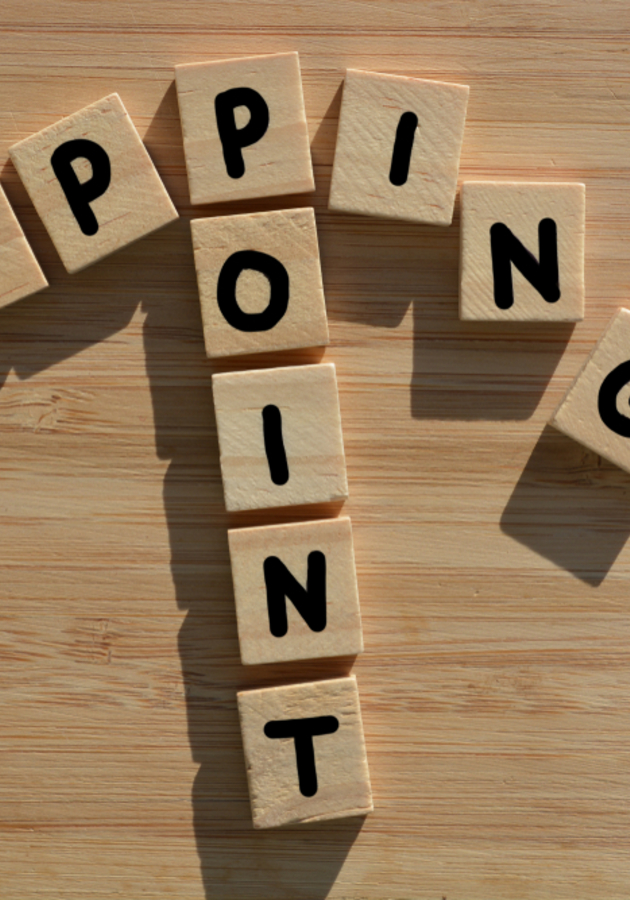We think of ourselves as rational, deliberate creatures, and that’s the foundation upon which we have built our world. Yet, beneath the rim of awareness, therein lies a host of unconscious prejudices. These cognitive errors are subtle, but are so out of sync with the way our sociopolitical systems are supposed to function that we can often end up being manipulated by policymakers without realizing it, or inadvertently making grave financial and legal errors.
In “The Hidden Brain,” American journalist Shankar Vedantam dips into streams of intersecting data coming from several social sciences to explore the brain mechanisms that govern everything from our table manners to our political preferences. Get ready to find out more about their nature and prepare to explore their strange and sometimes immense consequences!
The conscious and the hidden brain
Most of the time, we know why we do the things we do. We brush our teeth so that we don’t get cavities, we like a certain actor because he is exceptionally capable of capturing character, we vote for a party because we believe it might bring some good to the world. True, we can’t consciously regulate our hearts or breath, but we don’t really think about the part of our brain that does these things. Even more, “we are perfectly happy to delegate such mundane chores to some hidden part of our brain that does all that boring stuff.” In recent years, however, a number of experiments have shown that this hidden brain does a lot more than we thought or could have ever imagined. So much more, in fact, that “creatures of instinct” now seems a much better designation for human beings than “creatures of reason.”
We don’t know why we have two brains: a conscious and a hidden one. But the most common explanation is that they are evolution’s best answer to dealing with two kinds of experiences: novel and familiar. “The conscious mind excels in novel situations because it is rational, careful, analytical,” explains Vedantam. “But once a problem has been understood, and the rules to solve it discovered, it makes no sense to think through the problem afresh every time you encounter it. You apply the rules you have learned and move on. This is the dimension in which the hidden brain excels. It is a master of heuristics, the mental shortcuts we use to carry out the mundane chores of life.”
That’s why you only need to learn how to swim, ride a bike or read one time. Once you master the rules through careful awareness, your conscious brain relegates the activity to the hidden brain and stops bothering with it. Once you learn how to type, for example, you don’t have to summon up knowledge of where each letter is on the keyboard anymore; the unconscious brain, serving as a repository of automatic skills, does this for you and saves you the trouble of laboriously deciding how to strike the right key. Because this saves a lot of energy – it’s far more difficult to learn a new thing than act out an old routine – the objective of the conscious brain is to recode whatever manual processes it happens upon into a set of rules that the hidden brain can perform automatically, without its supervision. This is the brain connection.
The brain connection and the nature of our unconscious biases
As effective as the brain connection is, there are two problems with it. The first is that not every manual activity can – or, indeed, should – be translated into an automatic process. The second, and bigger, problem is that once the hidden brain takes over the reins, the conscious brain is programmed to believe its judgment unconditionally and to try to justify it. So, if your hidden brain attempts decoding a situation using a wrong set of rules, you won’t even know that you’re being tricked into believing something that isn’t real. And unlike in the movie, there are no red pills to help you see through this real-world “matrix.” Well, except for science. So, let’s stay with it a few more moments.
The main difference between the two brains lies not in their ability to process information, but in the way they process it. While the conscious brain is slow and deliberate – and aware that there are exceptions to every rule – the hidden brain “is designed to be fast, to make quick approximations and instant adjustments.” Since it prefers speed over accuracy, the hidden brain “regularly applies heuristics to situations where they do not work.” Our conscious brain wakes up only after things go wrong and we start experiencing the consequences of the wrongly applied heuristics. It is then that we find ourselves asking things such as “What was I doing?”, “Why didn’t I say something?” or, “How could I have been so foolish?” But by then, it’s usually too late.
What these questions reveal is that our actions are often at odds with our intentions. Psychologists refer to this discrepancy as “unconscious bias.” The phrase – at variance with common usage – doesn’t necessarily signify something negative. Some unconscious biases are helpful, innocuous, and even comical; however, the effects of others are disastrous and deadly. Unfortunately, most of their power stems from the fact that we are unaware of them. They cause us not only to make serious errors of judgment, but also to feel certain about our conclusions. In a way, because of the brain connection, our hidden brain is to our conscious brain what Iago is to Othello in Shakespeare’s famous play: a master villain manipulating a gullible and unwitting protagonist into believing a few tricks and ruses. Let’s see how this works in practice.
The hidden brain at work: private and professional settings
The effects of unconscious bias are numerous and touch our everyday lives far and wide. Let us start by tracking two of them in two different settings – private and professional. Of course, this is strictly for explanatory purposes. Meaning, these two biases are not limited to these two settings only. The hidden brain works constantly, so it constantly affects our behavior, regardless of the surroundings or the situation.
The watching-eye effect, also known as the spotlight effect, is the first bias we’ll explore here. Essentially, it says that people behave more altruistically in the presence of images that depict eyes. As strange as this might sound, it has been demonstrated numerous times by many different researchers. One of them, named Melissa Bateson, did a research at an honor-system kiosk in Newcastle. Over the course of 10 weeks, she replaced the small decorative image at the top of the notice reminding people to pay for their drinks. For the five even-numbered weeks, she printed pictures of flowers; during the odd-numbered weeks, she used images showing different pairs of watching eyes. Even though people didn’t notice the image was different from week to week, they acted more honestly in the presence of eyes than in the presence of marigolds, paying, on average, seven times more often in the odd-numbered weeks. The small lesson here is that a picture of watching eyes makes people more altruistic; the big lesson is that “people are powerfully influenced by things that they never consciously register.”
Not long after Bateson, psychologists Adam Alter and Daniel Oppenheimer discovered that, in the absence of other information, traders tend to overvalue companies with easy names (such as Barnings) and easy ticker symbols (BAR) and undervalue companies with difficult names (Aegeadux) and difficult ticker symbols (KAR). That’s why start-ups with easy-to-pronounce names outperform companies with difficult-to-pronounce names by 11% on their first day of trading and by more than 33% after a year! After that, the pronounceability effect goes away. Once the investors learn more about the companies, the conscious brain takes over and the unconscious bias toward pronounceability stops making sense. The point, however, is that this bias doesn’t make sense from the start. We can’t control the ways our hidden brains associate easy names with a sense of comfort and a sense of comfort with familiarity and safety, but this is usually a minor issue. Unfortunately, this heuristic is not designed for the market, which is why it can sometimes be a recipe for disaster.
The hidden brain at work: social and intimate settings
The pronounceability effect is a recipe for disaster in social situations as well. Even though unpronounceable names usually designate nothing more than a different linguistic or sociocultural background, our hidden brains associate them with discomfort and, moreover, force our conscious brains to rationalize the uneasiness. That’s how prejudice becomes narrow-mindedness or intolerance: it’s the final result of not questioning and not readjusting the inverted brain connection.
The reverse of the pronounceability effect is the mimicry effect. Whether we want to or not, we tend to respond more positively to people emulating our behavior. This was discovered by a Dutch psychologist named Rick van Baaren who asked a waitress at Applebee’s to either mimic her customers’ orders word for word, or acknowledge them by using a synonym and saying “yes.” Fascinatingly enough, the tips from the first group of customers were 140% larger than the tips from the second group. Van Baaren found that when it follows the natural rhythm of communication – whether visual or linguistic – mimicry communicates something important: “I am listening to you,” it says. “I have understood you and I agree with you.”
The mimicry effect explains why so many individuals fall prey to other people’s palpable flattery and cajolery. Once the echoing hits the right frequency, it turns off the conscious brain, and the hidden brain starts whispering subtly: “He likes you. You’re as great as he says you are.” That’s why when Andy Bernard starts copying Michael Scott’s mannerisms and dialogue in “The Office,” he is unbearable to everybody but Michael. Unlike him, everybody else can use their conscious brains to analyze the situation – after all, it is not their behavior that is being emulated.
Unconscious biases have a lot to say in love as well, where the complementarity effect is of utmost importance. As a social psychologist named Abraham Tesser discovered, our hidden brain – just like our genes – is pretty selfish. When our lovers or close friends do well in activities that don’t interest us, it makes us feel happy, but only because it gets to bask in reflected glory. However, when someone we’re close to excels in an area we would like to be seen as outstanding ourselves, it gets jealous and triggers resentment toward that someone. This, of course, spells trouble for the success of any relationship. The antidote can be summed up in a single word: complementarity. Two people doing identical things will one day become rivals, and two people with discordant or opposite hobbies and professions will grow apart in a few years. However, time is the greatest friend to people whose interests are similar and corresponding: as it goes by, they will get closer to each other and even make each other better. Unsurprisingly, they have the best chance to succeed.
Final notes
“Hidden Brain” by Shankar Vedantam is an important contribution to the ever-more fascinating story of our unconscious minds. Not just because it makes some scientific findings more accessible through sharp and engaging writing, but also because – in the words of Sudhir Venkatesh, author of “Gang Leader for a Day” – it “addresses the madness and beauty of our struggles to create a moral and just world.”
And isn’t that what all good writing should strive to achieve?
12min tip
Question your prejudices, no matter how convinced you might be in their accuracy. Most of the time, it’s your hidden brain applying simple, inherited rules to complex situations where they do not apply.





























